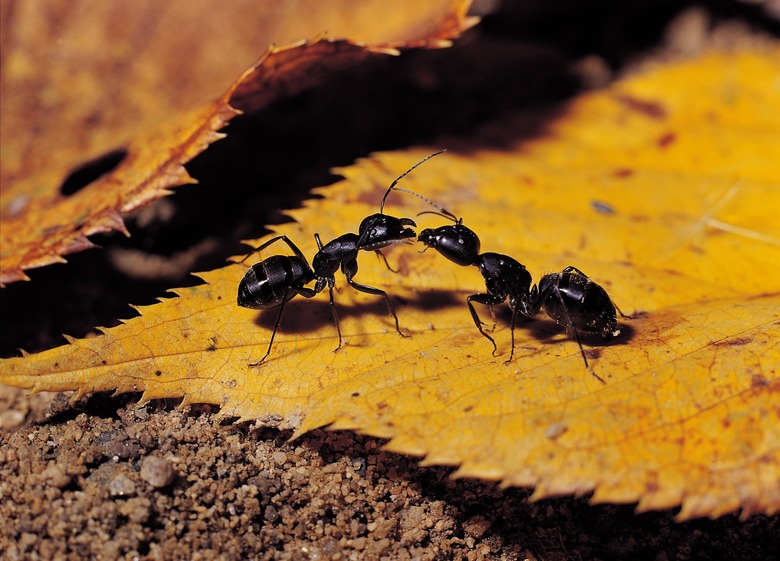How Do Ants Protect Themselves?
There are more than 22,000 species of ants living on the Earth today, and they have existed on the planet for more than a million years. Ants live in colonies of up to a million, organizing their actions and communicating through the use of chemical signals and pheromones. Ants of all species are highly adapted to protecting and defending themselves, their homes and their colonies.
Bodies Built for Defense
Bodies Built for Defense
Ants' bodies are divided into three main parts: head, thorax and abdomen. On either side of the ant's mouth are its mandibles, pincer-like structures they use for carrying food, digging nests and fighting. Aside from mandibles of varying size depending on the species, ants may also have stingers used for defense against predators. They may also have a poison sack located inside the abdomen.
Chemical Warnings
Chemical Warnings
Ants communicate constantly through chemical and pheromones. They may do this by either touching antennae or laying scent trails on the ground. Ants also communicate danger with these chemicals. When in danger, an ant releases a pheromone signaling its need for help to nearby ants who will rally to his defense. Depending on the predator and the ant species, this may mean swarming, stinging or fighting with their mandibles.
Nest Defenses
Nest Defenses
Ants build their homes in large colonies underground. They conceal their underground nest's entrance with simple hills of dirt. Some ants pack this dirt hard, and other are known to build high mounds several feet in the air. This protects their vast network of tunnels from invasion, therefore protecting their queen, other worker ants, ant young and their food supply. The environments that some species of ants live in — like dense rain forests — can also be used to camouflage and further protect the colony.
Army Ants, the Exception
Army Ants, the Exception
Army ants are the exception to the colony defense system. There are about 150 species of army ants living in the warm tropics and subtropics of Central and South America. These species of army ants do not rely on massive underground nests to protect their colony. Instead, these ants are highly aggressive with large mandibles for defense and attack. They find protection in large numbers and make their nests out of their own linked bodies. These nests are temporary. The colony of Army ants is constantly on the move as it hunts its prey.
References
Cite This Article
MLA
Barry, Tiffany. "How Do Ants Protect Themselves?" sciencing.com, https://www.sciencing.com/do-ants-protect-themselves-8709450/. 24 April 2017.
APA
Barry, Tiffany. (2017, April 24). How Do Ants Protect Themselves?. sciencing.com. Retrieved from https://www.sciencing.com/do-ants-protect-themselves-8709450/
Chicago
Barry, Tiffany. How Do Ants Protect Themselves? last modified March 24, 2022. https://www.sciencing.com/do-ants-protect-themselves-8709450/
